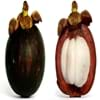Health Benefits
Increases metabolic rate, Lower blood pressure, Protects against kidney stone formation
Cancer prevention, Cures gastro-intestinal troubles, Reduces nervous tension, Ulcer prevention
General Benefits
Gives you energy
Anti oxidant properties, Anti-inflammatory properties, Boosts immune system, Controls blood pressure, Digestive aid, Eye care, Helps in weight loss, Improves blood circulation, Maintains healthy cholesterol level
Skin Benefits
Skin cleansing
Anti-aging benefits, Reduces wrinkles
Hair Benefits
NA
Regulates hair growth
Side Effects
Affects blood glucose levels, Decrease in blood sugar levels, Coagulation
Allergic reaction
Best Time to Eat
As a snack in the late afternoon, Eat the fresh ones, avoid mixing with any other foods, don't eat after meal., Morning time (before lunch)
As a snack in the late afternoon, Don't consume at night and before bed, Eat the fresh ones, avoid mixing with any other foods, don't eat after meal., Morning time (before lunch)
Vitamin A (Retinol)
Not Available
Vitamin B1 (Thiamin)
Not Available
Vitamin B2 (Riboflavin)
Not Available
Vitamin B3 (Niacin)
Not Available
Vitamin B5 (Pantothenic Acid)
Not Available
Vitamin B6 (Pyridoxin)
Not Available
Vitamin B9 (Folic acid)
Not Available
Vitamin C (Ascorbic Acid)
Water Content
Not Available
Calories in Fresh Fruit with Peel
Calories in Fresh Fruit without Peel
Not Available
Not Available
Calories in Frozen Form
Not Available
Not Available
Calories in Dried Form
Not Available
Calories in Canned Form
Not Available
Not Available
Calories in Pie
Not Available
Varieties
NA
Meech’s Prolific, Lusitanica, Champion and Vranja AGM
Color
Orange, Yellow
Green, Yellow
Inside Color
Creamy Yellow
White
Texture
Succulent
Crunchy
Origin
Jamaica
Iran, South-West Asia, Turkey
Soil Type
Loamy
Loam, Well-drained
Climatic Conditions
Warm
Warm
Facts about
- The name is derived from the word "ugly" refering to the it's unpleasant appearance, with rough, wrinkled, greenish-yellow rind, wrapped loosely around the orange pulpy citrus inside.
- Due to its strong & fruity aroma, brides consumed quince to ensure "perfumed lips".
- It is also called as ‘Pear of Cydonia’, being native to Caucasus and Iran.
- They call it as the ‘golden apple’ of Greek Mythology.
Top Producer
Jamaica
Turkey
Other Countries
NA, United States of America
Algeria, Argentina, Azerbaijan, China, Iran, Morocco, Serbia, Spain, Uzbekistan
Top Importer
Europe
United States of America
Top Exporter
Jamaica
Argentina
Botanical Name
Citrus reticulata × Citrus paradisi
Cydonia oblonga
Synonym
Tangelo, citrus tangelo
C. vulgaris
Subkingdom
Tracheobionta
Tracheobionta
Division
NA
Magnoliophyta
Class
Unknown
Magnoliopsida
Species
C. reticulata × paradisi
C. oblonga
Generic Group
Citrus fruit
Rose
Difference Between Ugli fruit and Quince
We might think that Ugli fruit and Quince are similar with respect to nutritional value and health benefits. But the nutrient content of both fruits is different. Ugli fruit and Quince Facts such as their taste, shape, color, and size are also distinct. The difference between Ugli fruit and Quince is explained here.
The amount of calories in 100 gm of fresh Ugli fruit and Quince with peel is 45.00 kcal and 57.00 kcal and the amount of calories without peel is Not Available and Not Available respectively. Thus, Ugli fruit and Quince belong to and category.These fruits might or might not differ with respect to their scientific classification. The order of Ugli fruit and Quince is Sapindales and Rosales respectively. Ugli fruit belongs to Rutaceae family and Quince belongs to Rosaceae family. Ugli fruit belongs to Citrus genus of C. reticulata × paradisi species and Quince belongs to Cydonia genus of C. oblonga species. Beings plants, both fruits belong to Plantae Kingdom.









